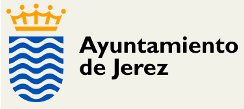HISPANO-CARTHAGINIAN COIN
Numismatics
HISPANO-CARTHAGINIAN COIN
Replica. Bronze.
Diameter: 2.3 cm. Thickness: 0.32 cm.
Protohistory. Around 220-215 B.C.
Origin
Mesas de Asta. Jerez de la Frontera. Cádiz.
Description
Coin with depiction of the head of the goddess Tanit on the obverse. The reverse shows the protome of a horse. The replica is the bronze monetary unit from the Carthaginian period and follows the pattern of weights used in Sicily and southern Italy. It was executed crudely and carelessly, for which reason some experts believe it was used in military campaigns: the lack of resources and time would not allow elaborate and high-quality moulds to be made for coining. This coin must therefore be related to the presence of the Carthaginians in the Iberian peninsula in the Second Punic War.
Bibliography
- Esteve Guerrero, M. (1945): Excavaciones de Asta Regia (Mesas de Asta, Jerez). Campaña 1942-43. Acta Arqueológica Hispánica III. Madrid, p. 55 and print XXV.
- González, R.; Barrionuevo, F. y Aguilar, L. (1997): Museo Arqueológico Municipal de Jerez de la Frontera. 'Municipal Archaeological Museum of Jerez de la Frontera' Ayuntamiento de Jerez, p. 92.
![[Translate to Español:] MONEDA HISPANO-CARTAGINESA](/fileadmin/Image_Archive/Museo/Piezas/19%20IG0666%20Explorar8006.jpg)
